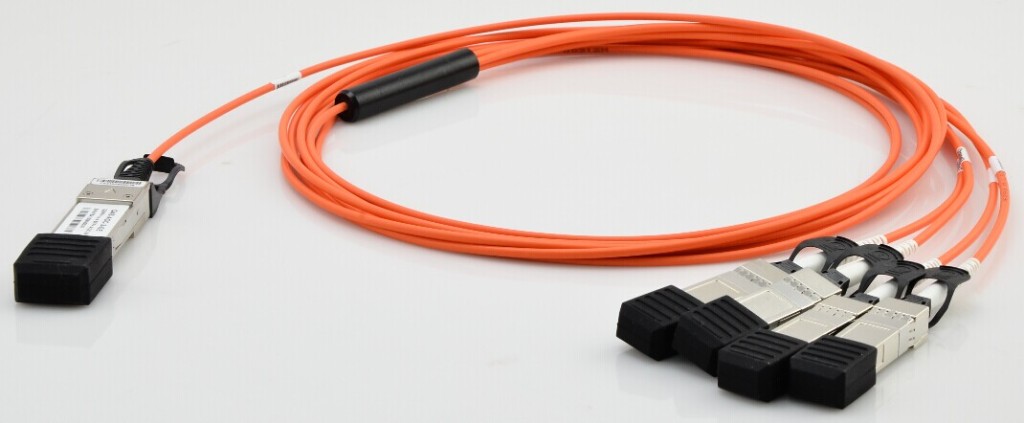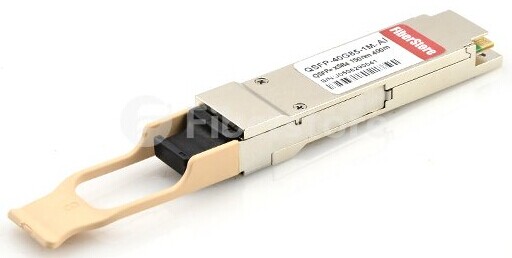Since March 1999, the Ethernet industry has been working on providing solutions to these problems by increasing the speed of Ethernet from 1 to 10 gigabits per second. For enterprise LAN applications, 10 Gigabit Ethernet enables network managers to scale their Ethernet networks from 10 Mbps to 10,000 Mbps, while leveraging their investments in Ethernet as they increase their network performance. Meanwhile, the newest module standard, namely the enhanced small form-factor pluggable (SFP+) transceiver , has been developed to meet the increasing usage and demand for higher-performance servers, storage and interconnects in the 10 Gigabit Ethernet world.
The small form-factor pluggable plus (SFP+) can be referred to as an enhanced version of the SFP that supports data rates up to 16 Gbit/s. The SFP+ specification was first published on May 9, 2006, and version 4.1 published on July 6, 2009. SFP+ supports 8Gbit/s Fiber Channel, 10 Gigabit Ethernet and Optical Transport Network standard OTU2. It is a popular industry format supported by many network component vendors. The SFP+ product family includes cages, connectors, and copper cable assemblies. The SFP+ transceiver modules are specified for 8Gbps/10Gbps/16Gbps Fiber Channel and 10-Gigabit Ethernet applications.
SFP+ transceiver comes with various outstanding advantages. SFP+ covers various data rates for different communication standards like Ethernet, SONET (OC-192), SDH (STM-64) or 10G Fiber Channel and any other interfaces with a data rate up to 16 Gbps. It is with more compact size and measurement than former X2, Xenpak and XFP, which enables SFP+ suitable for installations with higher port density. In addition, SFP+ takes the advantage of lower power consumption for less than 1W, like 455883-B21 compatible 10GBASE-SR SFP+ transceiver shown in the following picture. SFP+ transceivers are with managed digital optical monitoring and superior high temperature performance. Therefore, it is a cost effective way to connect a single network device to a wide variety of fiber cable distances and types using a SFP+ transceiver module.

SFP+ transceivers are designed to use together with small form factor connectors and offer high speed and physical compactness, providing instant fiber connectivity for your networking gear. They are available for copper and for all common fiber modes, wavelengths and data rates and allow network operators to connect different interface types to the same network equipment, via an SFP+ port. To take advantage of this flexibility and to save money, more and more network equipment are being designed with SFP/SFP+ ports. Several industrial acknowledged standards for SFP+ have been made for 10Gpbs networks, including 10Gbase-SR which defines the SFP+ transceiver working with OM3 10G multimode fiber at 30 to 300 meters range, 10Gbase-LR which defines the SFP-10G-LR transceiver working with single mode fiber at 10km range, and so on.
To conclude, 10 Gigabit Ethernet has become the technology of choice for enterprise, metropolitan, and wide area networks. In terms of physical media, the 10G SFP+ transceiver can support distances to 300 meters on multimode fiber and 40 km or more on single mode fiber. Fiberstore is a leading supplier of SFP+ transceivers. We have a large selection of SFP+ transceivers in stock, such us SFP+ MM 300m, SFP+ 10km, SFP+ 40km, SFP+ 80km, CWDM SFP+, DWDM SFP+, BiDi SFP+, etc. All of our SFP+ transceivers are tested in-house prior to shipping to ensure that they will arrive in perfect physical and working condition.











